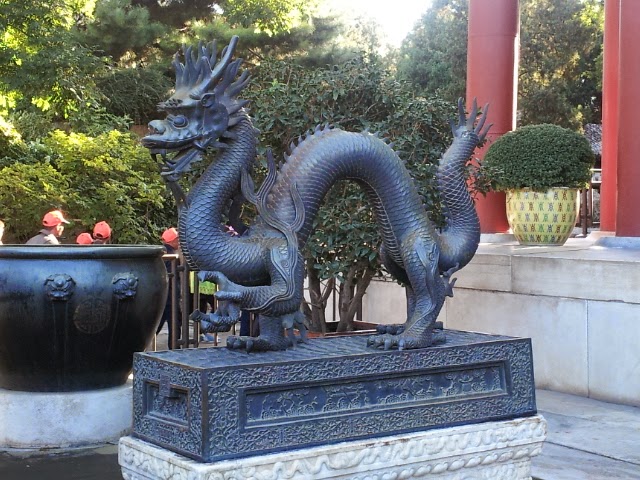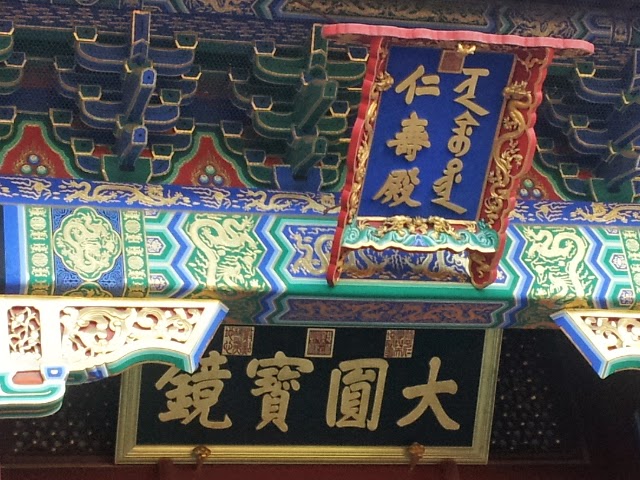Great Wall
The purest air and the bluest sky in China are located at the Great Wall. There exist a few entrances to get access to the Great Wall. The steps are uneven.
According to UNESCO, the Great Wall is the world's largest military structure.The construction started in 220 B.C. under Qin Shi Huang and continued up to Ming Dynasty. Fortifications were joined together in order to form an united defence system against invasions from the north.
(Pictures to come)
Summer Palace (頤和園)
No. 19, Xinjiangongmen Road, Haidian District
http://www.summerpalace-china.com
The construction began in 1750. The Summer Palace was initially built as a luxurious garden for royal families to rest and to entertain. At the end of Qing Dynasty, it became the main residence for royal members. During the rampages of the Anglo-French Allied Forces, the royal garden was destroyed by fire. The Summer Palace was reconstructed in 1888. Empress Cixi embezzled navy funds to rebuild it as a resort in which she can spend the rest of her life. However, the royal garden suffered another hit by the Eight-Power Allied Forces in 1900. The Summer Palace was rebuilt in the following 2 years.
Parallel to Kunming Lake, the Long Corridor (長廊) was originally built in 1750 and then rebuilt in 1886 following the burnt down by the Anglo-French Allied Forces in 1860. It starts from the Yaoyue (Inviting the Moon) Gate in the east and ends at the Shizhang (Stone Old Man) Pavilion in the west. The walkway extends 728 meters including 273 sections. There exist more than 8,000 colorful paintings depicting flowers, birds, landscapes and stories from Chinese literary classics (eg. Journey to the West) on the crossbeams, ceilings and side pillars. According to the Guinness World Records, the Long Corridor is the longest covered wooden corridor.
Built in 1750 (the 15th year of Emperor Qianlong's reign), the Seventeen-Arch Bridge (十七孔橋) covers a length of 150 meters. Connecting the east bank and the Lake Island, it is the longest bridge in any Chinese imperial garden.
(Picture to come)
Built in 1755, the Marble Boat (石舫) sits at the edge of the lake. It was carved out of huge rocks. The 36-meter boat originally had a Chinese-style cabin which was burned down by the Anglo-French Allied Forces in 1860. In the 19th year of Emperor Guangxu's reign (1893), the cabin was rebuilt in the western style, named the "Clear and Peaceful Boat" pursuant to the saying of "Let the river be clear and the sea be peaceful".
(Picture to come)
Eight-Power Allied Forces
On September 7, 1901, Britain, Germany, United States, Tsarist Russia, France, Japan, Italy & Austria sent troops to invade China. They forced the Qing Government to sign the insolent and unequal Protocol in human civilization: Protocol of 1901, also know as Protocol of Xinchou. It stipulates that the Qing Government shall pay an indemnity of 450 millions taels of silver to the Eight-Power Allied Force with an annual interest of 4 percent over 39 years. An additional amendment of 20 million taels of silver from provincial government totalized an indemnity of a sum of 1 billion taels of silver, equivalent to the nation's entire income over 10 years. The Qing Government had only 80 millions taels of silver in annual income. The Eight-Power Allied Forces also imposed the Qing Government to disarm in important areas (Beijing, Tianjin and Tangshan), garrison installations, legation quarters expansion by the powers, tariff agreement, Custom Control, etc. As a consequence to the heavy government deficits, people suffered from all kinds of oppression such as bullying and killing by the powers. Many of the royal relics and wealthy properties of business firms were plundered.
In addition to the museums, Chairman Mao’s Mausoleum, the Temple of Heaven and the Ming Tombs are other attractions that I would like to visit in Beijing.
Sources: ebeijing.gov.cn, english.visitbeijing.com.cn, china.org.cn, english.cntv.cn, whc.unesco.org




















































